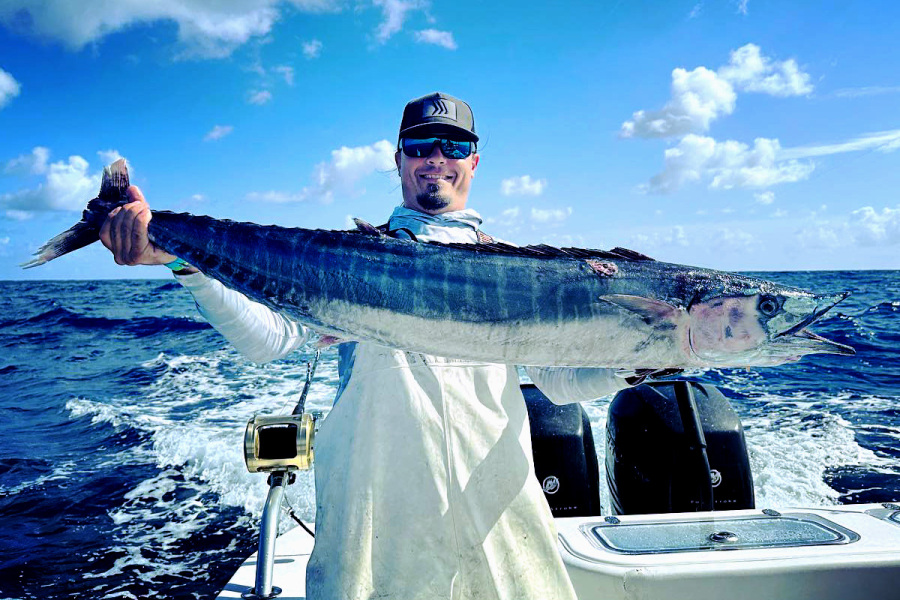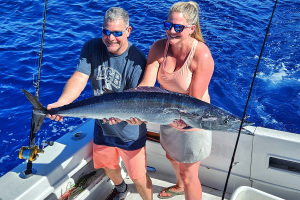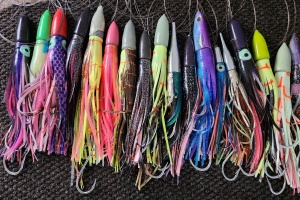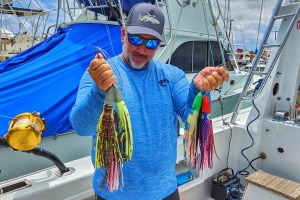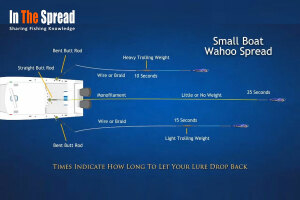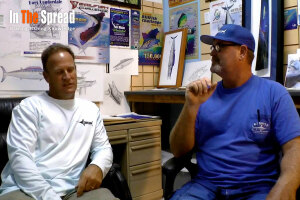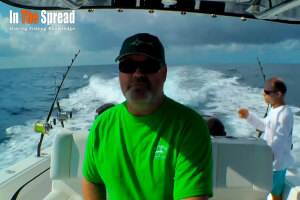Master the art of Wahoo fishing by understanding their habitat depths, adapting to seasonal changes, and employing varied techniques. This comprehensive guide offers insights into their behavior, ideal water temperatures, and strategies for targeting them at different depths, significantly increasing your chances of a successful catch.
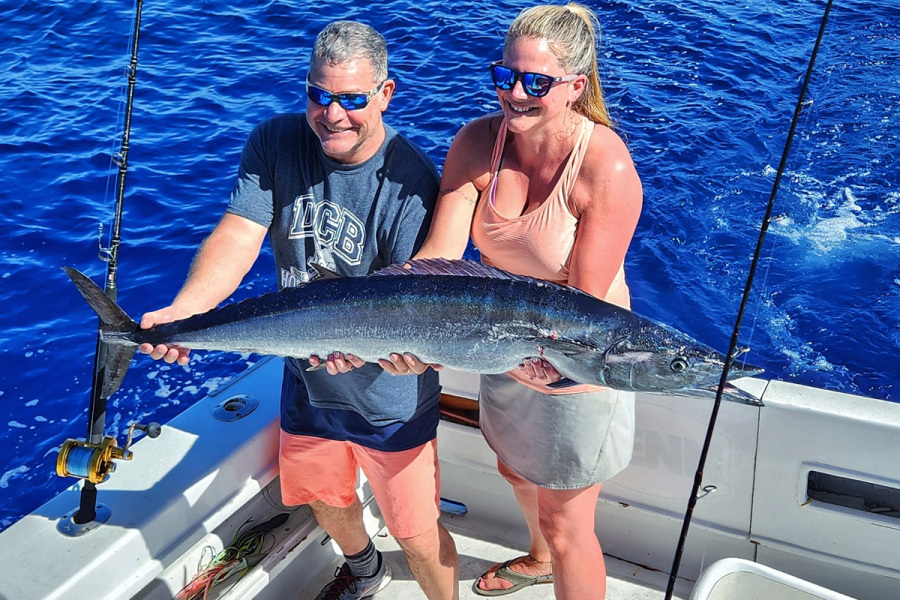
Optimal Depth for Wahoo Fishing
Understanding the optimal depth for Wahoo fishing is crucial for several reasons, each impacting the success rates and overall fishing experience. Knowing the depths at which Wahoo are likely to be found allows anglers to properly present baits and lures at the depth the fish are holding. This knowledge helps save time and money while out on the water by minimizing fruitless time running your presentations well above the fish. It also helps conserve your time and fuel. Additionally, familiarity with Wahoo depth preferences assists captains and crews in deciding where to concentrate efforts on a given day or location. Pinpointing areas where underwater contours create depth changes suited for finding Wahoo can vastly improve catch numbers. Taking these factors together, insight into ideal Wahoo depths creates a better fishing encounter all around - more bites, more catches, less wasted time and resources. This all ultimately allows anglers to better experience the thrill of connecting with hard fighting Wahoo.
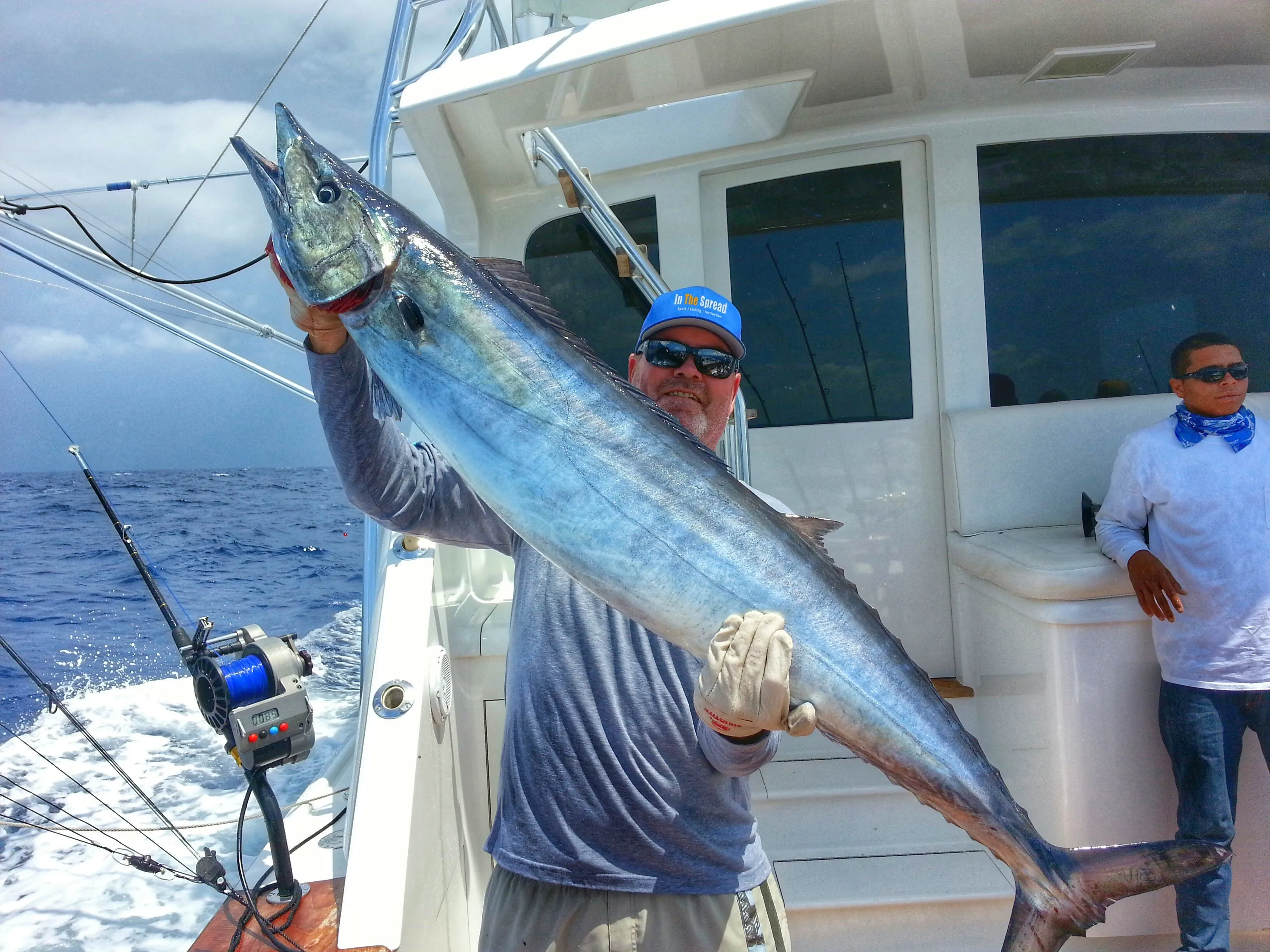
The Dynamic Depths of Wahoo Habitats
Behavior and Water Depth
Solitary in their habits, or occasionally associating in small, loosely connected bands of two or three, wahoo fish manifest a peculiar tendency. In circumstances deemed favorable, they congregate in larger collectives, sometimes exceeding a hundred in number. Their existence is predominantly spent in the vast, unbounded expanse of the open sea, only venturing towards the surface realm to fulfill their feeding needs. Notably drawn to the flotsam of the marine world, these creatures frequently assemble around buoys, watercraft, and other such accidental or man-made structures adrift in the ocean. This pattern of behavior implies a strategic preference: while they possess the capacity for deeper descents, they favor those shallower zones where sustenance is more easily procured.
Adaptation to Varying Conditions
Adaptable to the ever-changing conditions of the oceans, Wahoo exhibit a remarkable versatility in both their diet and physical characteristics. Predominantly, their sustenance is derived from the marine fauna - chiefly other fish and squid. A meticulous analysis reveals the composition of their diet: 84.64% of it is constituted by native fish, 14.26% by cephalopods, and a mere 1.1% by crustaceans. This diverse dietary regime enables them to flourish across varying depths of water, precisely in those realms where their preferred prey abound.
Water Temperature
Wahoo fish exhibit a marked preference for a specific thermal range in their aquatic milieu, favoring temperatures between 65 and 80°F. Yet, their adaptability extends to inhabiting a strata of water where temperatures may ascend as high as 90°F. There are no absolutes here. Wahoo will situate themselves in water where the food is holding, most importantly. In the warmth of these waters, their activity intensifies, a trait that draws them predominantly to tropical and subtropical zones. Conversely, in the face of declining temperatures, whether due to seasonal shifts or cooler aquatic environments, Wahoo instinctively migrate to deeper waters. Such depths offer a more consistent thermal environment, aligning more closely with their physiological requisites and ensuring their well-being.
Currents
The influence of ocean currents is a fundamental factor in determining the depth at which Wahoo are found. These fish are observed to navigate along the contours shaped by the ocean's floor, notably around reef drop-offs, ledges or other significant topography. Here, currents churn the waters, creating nutrient-rich eddies that become havens for both prey and predators alike. In locales where currents are particularly strong, Wahoo have been known to descend to depths reaching 600 feet. This behavior is especially pronounced when cooler, green water displaces them from their shallower haunts. Notably, Wahoo demonstrate a tendency to linger in a given area for several days if the conditions prove favorable, suggesting that currents play a significant role in shaping their short-term migratory patterns.
Prey Distribution
The availability and distribution of prey emerge as the most significant determinants of the depths at which Wahoo are found. Their diet primarily consists of fish and squid, placing them in direct competition with other marine predators, such as tuna, for these food sources. A frequent occurrence is the presence of Wahoo in the vicinity of underwater formations like banks, pinnacles, and areas of natural debris. These locations attract baitfish, drawn by either the shelter or the food these structures offer. It is this confluence of structure and an inherent predatory instinct that guides the Wahoo to those depths where their prey is most plentiful.
Water Column Stratification
- Epilimnion: This is the uppermost layer. It is warmer and less dense compared to the layers below. The influence of wind and wave action often results in this layer being well-mixed.
- Metalimnion (Thermocline): Serving as the middle layer, the Metalimnion is notable for a rapid change in temperature and density as one moves deeper.
- Hypolimnion: Positioned at the bottom, this layer is colder and denser. It is typically characterized by lower oxygen levels compared to the upper layers.
Influence on Wahoo’s Vertical Positioning
The phenomenon of water column stratification exerts a significant influence on the vertical positioning of Wahoo within the oceanic realm. This stratification forms barriers impeding vertical mixing, thereby affecting the interchange of heat, carbon, oxygen, and nutrients. Wahoo, being pelagic predators, are typically found within the epilimnion or adjacent to the thermocline. These zones are rich in prey like smaller fish and squid. The thermocline, in particular, serves as a boundary that concentrates prey, rendering it an ideal hunting zone for Wahoo.
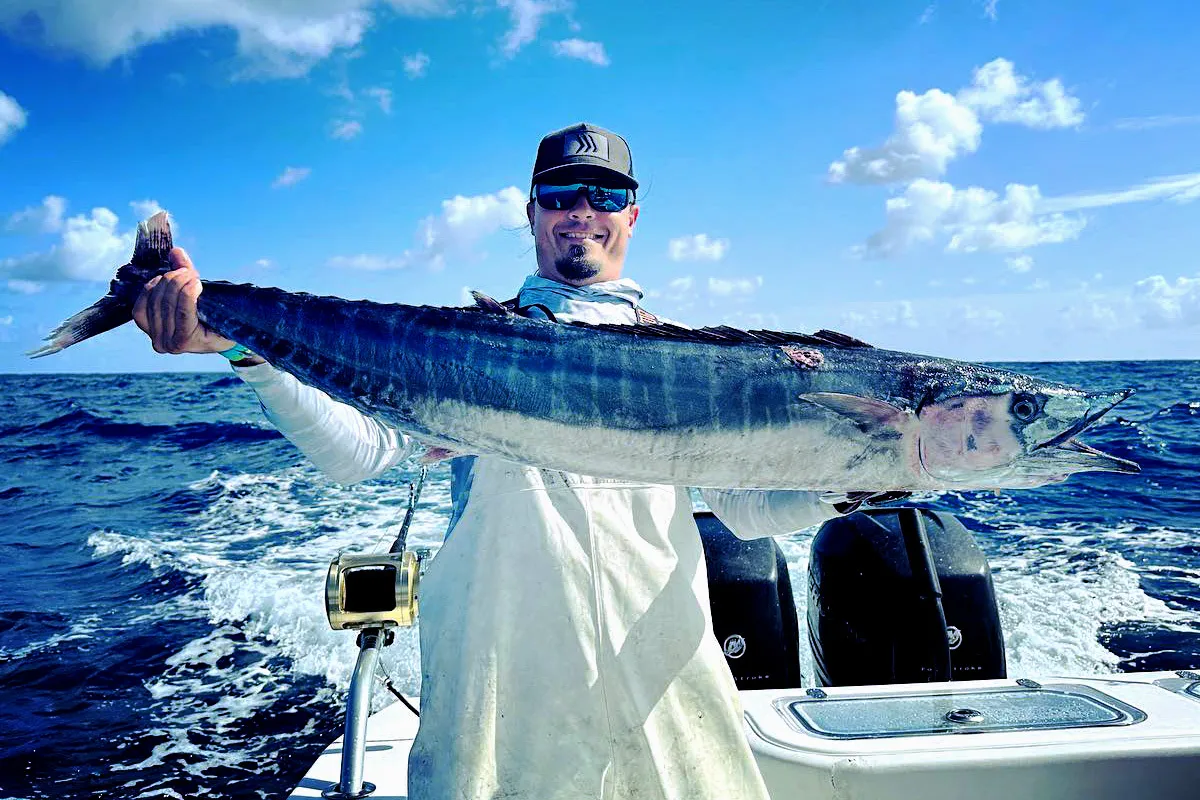
Unveiling the Optimal Depth Range
- Time of Year: Seasonal changes prompt Wahoo to migrate and adjust their depth. In colder months, they are inclined to occupy deeper waters. Notably, larger Wahoo are often caught during fall and winter, particularly around moon tides and in conjunction with pre-frontal weather conditions.
- Location: Geographic location is pivotal. For instance, in Florida's Upper Keys, Wahoo congregate around reef drop-offs during significant tidal phases like the full and new moons. Local understanding of water movement, migratory patterns, and prey species proves invaluable.
- Water Conditions: Variations in surface temperature may compel Wahoo to search for food at greater depths. Furthermore, water clarity and the presence of color changes are indicators of potential Wahoo feeding areas. Cooler and greener water conditions can drive these fish down in the water column.
- Seasonal Depth Changes: In warmer months, Wahoo tend to approach closer to the surface, following the abundance of smaller fish and squid. Conversely, during winter, they may descend deeper in pursuit of stable temperatures and food sources, adapting to the shifts in water temperature and prey availability.
- Temperature Preferences: Wahoo favor warm waters, typically between 65 and 80 degrees Fahrenheit, where baitfish populations flourish. Warm currents and eddies, teeming with baitfish, serve as prime hunting grounds for these swift predators.
- Activity Peaks: Wahoo exhibit heightened activity during the low-light conditions of dawn and dusk, a common trait among many predatory fish. This timing affords them an advantage in ambushing prey, utilizing their speed and agility combined with reduced visibility. Consequently, anglers often target these periods for fishing, taking advantage of the increased feeding activity.
- Adaptability: Owing to their migratory nature and rapid changes in location and depth, Wahoo require anglers to be versatile and willing to alter their methods. This could involve modifying the depth of fishing, the time of day, or even the type of bait and lures used.
- Maximizing Opportunities: A thorough understanding of Wahoo behavior enables anglers to optimize their chances of a catch. For example, fishing nearer to the surface in warmer months or at greater depths during cooler periods aligns with Wahoo's habitual movements.
- Efficiency: Being aware of Wahoo's preferred water temperature range allows anglers to concentrate their efforts in areas where the fish are more likely to be active. This approach minimizes time wasted in unproductive waters and enhances the likelihood of encountering Wahoo.
- Strategic Timing: Given that Wahoo are most active during the twilight hours of dawn and dusk, scheduling fishing excursions to coincide with these times can result in more fruitful experiences. These low-light conditions favor the hunting style of Wahoo, making fishing during these periods particularly effective.
Pros Sharing Wahoo Knowledge
Targeting Wahoo at Different Depths
- Planer Fishing: The planer fishing method employs a planer (a hydrofoil of sorts), a device designed to follow a set path underwater when towed. It is highly effective for targeting fish at specific depths without the need for heavy weights. The planer conveys the lure to the chosen depth, and upon a fish striking, it disengages, facilitating a direct engagement with the fish, free from the planer’s resistance.
- Downriggers: Echoing the principle of planer fishing, downriggers uses a weight, or cannonball, attached to a winch. This setup allows the line and lure to be positioned at a precise depth. It is particularly useful for targeting fish that prey on smaller species at certain levels. Downriggers offer meticulous depth control and are widely utilized in both freshwater and saltwater environments.
- High-Speed Trolling: This approach involves towing lures at speeds ranging between 10 and 15 knots. Such speeds can incite aggressive responses from swift predators like Wahoo. High-speed trolling enables the covering of extensive water areas and can elicit reactionary bites from fish that aren't actively feeding.
- Slow Trolling: In stark contrast to high-speed trolling, this method is executed at speeds under 4 knots and at times near idle, often with live bait. It allows the bait to behave naturally, thereby rendering it more alluring to fish. Slow trolling is adaptable for targeting fish at varying depths, depending on the bait's position in the water column.
- Deep-Diving Lures: Specially designed to reach greater depths, these lures can be either trolled or cast and retrieved. Their inherent action imitates the movement of prey, attracting fish from a distance.
Maximizing Success through Depth Awareness
The essence of successful Wahoo fishing lies not only in the mastery of various techniques but also in the acute understanding of the local submarine terrain. The diligent use of depth charts to identify potential Wahoo hotspots is indispensable. These charts serve as crucial navigational tools, offering insights into the underwater topography where Wahoo are likely to congregate. Knowledge of such areas, marked by drop-offs, reefs, or other structures, is key in pinpointing where these elusive predators may hunt.

